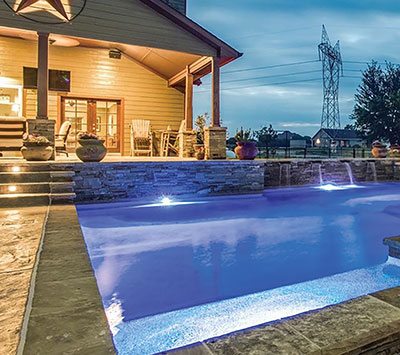While trying to loosen the rail, did you find & loosen and tap down the wedge bolt of the anchor - that releases it. Pictured below. They may have slopped some cement on top but it should be just below the surface under the escutcheon, found perhaps by chipping away concrete carefully to not go outside what the escutcheon covers. Plenty of other TFP threads on rail removal tactics. But I'm pessimistic about "observing" the anchor bod wire as those are usually lower and on the outside of the anchor, therefore deeper in the cement.
In testing of a new bond wire, maybe a large hose clamp to hold the temporary bond wire to the rail firmly?
Todays posts are greatly insightful I think, getting closer to solution - but OP seems a bit fuzzy on the differences between bond wire, neutral, and ECG (ground wire i.e. Equipment Grounding Conductor). I'll try to clarify, not sure I'll succeed

: In much earlier posts
@Barry321 wrote that it was a double breaker feeding the pump circuit, so we might assume it's a 220V feed that brings in two hot wire lines and one ECG - therefore technically no neutral supplied from the panel to the pump. But as
@mas985 correctly clarified, any NEV would travel through the power cos neutral to the panel and then continue on to the pump via the ECG because the ECG is tied to the power co neutral at the first breaker panel. Does that help?
If he connected it at the meter, it may have only tested from the power co to the house but there could still be an issue from the meter to the breaker box or bad connection in the breaker box.
Yes indeed, could still be a bad connection in either of those places, and for that matter anywhere in the path the ECG takes from the panel to the pump. It would not be the first time I found ugly splices with wire nuts on ECG wires or screwed to junction boxes along the way from the panel to the pump. I don't think we can assume it is a straight un-spliced run. Worst case the ECG could be shared with another circuit which of course is a code violation.
True that voltages should be very low between each of those measurement points (rail to water, etc) and also "even still more truer" that the critical thing is that they are the same - implying good bonding. In the Mike Holt video that I keep referencing, all test points measured 0.1v if I remember correctly.
And I too like the idea of cutting a line in the cement (along an expansion joint if possible) to run a new bond wire!
Anyone know the answer to this dumb question? What bonds the water? Is that essentially accomplished by the pool builder when they follow spec to join all concrete reinforcement to the bond wire feed (code says, I think I read, in at least four places). Which also bonds the deck outward a few feet around the pool. Obviously the ladder in the water adds some water bonding but just near the ladder, as would a metal light niche in just that area. Not sure why the coping measures differently - new mystery?
Anchors aweigh....










